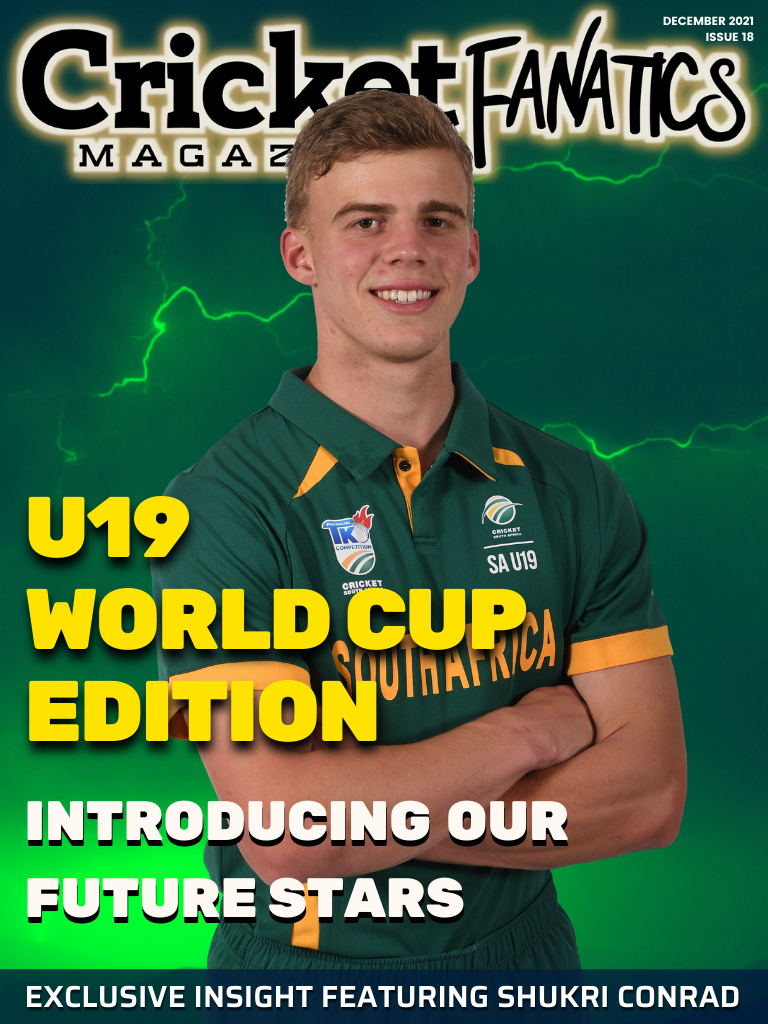
Table of Contents
EDITOR'S NOTE
The U19 World Cup Edition
Khalid Mohidin
Founder and Editor - Cricket Fanatics Magazine
People who know me well will know that I am a strong believer in promoting young players. They are the future of our sport and are the cornerstone of a healthy production line of Proteas players.
To see a young future star take the field is blissful to witness because they play their natural game with no fear and amplified passion.
Identifying these talented players at the beginning of their careers, and seeing them grow into superstars, is fulfilling and an honour. It increases my hope for the prosperity of cricket in South Africa.
As a journalist, I've been blessed to attend Cubs Weeks, Khaya Majola Weeks and Schools Weeks where I get to see these players in action before they start building a name for themselves. This has been an honour and a privilege, to see the pride in these players eyes when they are selected in SA Schools teams and then from there the SA U19 team.
The Under-19 World Cup is the chance for the rest of South Africa and the World to see the talent that we have to offer as a nation. Once again, a talented group of youngsters, coached by Shukri Conrad and led by the talented George van Heerden, will look to do what only one other SA team has done in the past, lift the World Cup trophy.
But it's not just about the win, it's about developing the next generation and preparing them for the rest of their lives as professional cricketers.
In this issue, we go on a full journey into the U19 side's preparations for the World Cup in the West Indies which takes place from 14 January – 5 February 2022.
We give you exclusive insight from the players and coaches so that you can get a better understanding of the effort that has gone into the development of our future stars.
So sit back, grab a beverage and a snack, and enjoy issue 18, the first-ever U19 World Cup edition of Cricket Fanatics Magazine.

BECOME A PATRON
By Khalid Mohidin
Hey, guys! Welcome to Cricket Fanatics Magazine. I would like to welcome you to the first and only fan-driven Cricket publication in South Africa.
I started this venture on 1 July 2019 with a vision to get fans from all walks of life engaged with the game and the personalities in cricket.
We want to tell the untold stories of South African cricket and we want fans to be heard.
Since we started, we covered the Mzansi Super League, Women’s Super League, Proteas Men and Women International Test, ODI and T20I series, as well as school and club cricket, with the aim of providing entertaining, engaging and educational content.
But hasn’t stopped there.
We started a Monthly Magazine where we provide multi-media content, including exclusive features, opinion pieces and analysis.
This works hand-in-hand with our YouTube channel where we produce unique cricket shows that allow fans to call in and have their say.
We have the Daily Show, which reveals all the major talking points in South African cricket.The Sunday Podcast Show where we sit back, relax and engage with the live chat, answering all the questions fans have about us and the game.
We have Off-Side Maidens, the first ever All-Women’s Cricket Show on YouTube, which helps empower women in cricket and gives them a place to share their own views on not only women’s cricket but all cricket.
We have a Legends show, where we interview all legends in cricket.
To produce all of this, we’ve invested a lot of money, time and effort to bring this to you for free.
But to keep this going we need your help. So we have opened a Patreon account.
Today, we are fortunate that technology has enabled anyone to become a patron of creative work, even if they are not a billionaire.
We have therefore launched a campaign for you as a Cricket Fan to become a patron and support us as an independent, bootstrapped publisher.
As a Patron, you also get your voice heard as a Fan.
Plus: You have the opportunity to become more engaged with the content we produce.
Every month we produce at least:
- 60 Website Articles
- 20 Daily Video Shows
- 4 Weekly Podcasts
- Match Previews
- Match Reviews
- Video Interviews
- And more…
So please join our Patreon campaign today.
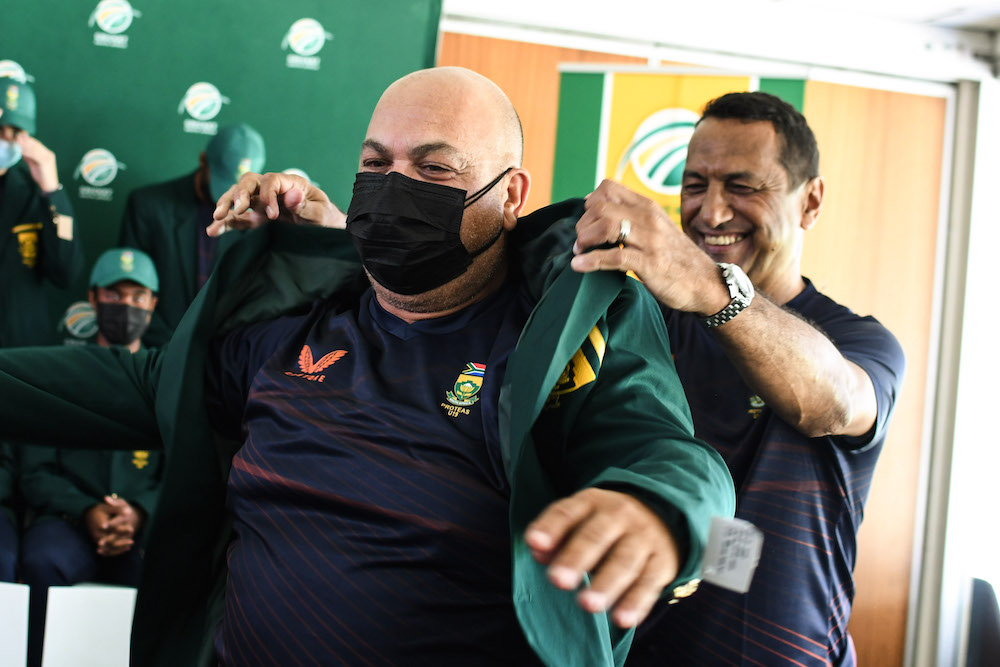
“I want us to stay true to our brand” – Shukri Conrad
By Abhai Sawkar
The ICC Under-19 World Cup is a tournament where we get to see some of the brightest, most talented fledgling international cricketers from around the world. Over the course of time, there have been numerous international superstars that have graduated from the national Under-19 setup.
From a South African perspective, the sky’s the limit. The junior Proteas reached the quarterfinals two years ago, when the U19WC was held at home. There definitely is room for improvement, and despite COVID-19 hindering the team’s preparation, head coach Shukri Conrad is optimistic about what might be in store.
“It’s been a trying time, but it’s been the same for everyone. We’re fortunate that we’ve been able to do something,” said Conrad to Cricket Fanatics Magazine. What this pandemic has taught is that you’ve got to be agile, fluid, and be able to think on your feet. There are people in worse situations than we are, and it’s not all doom and gloom.”
For Conrad, being in charge of the youth national side carries plenty of significance. It’s not only about getting ready for the big tournament, but even more so about mentoring and nurturing the emerging players throughout the journey.
“It never was about the World Cup only. You’ve got a responsibility towards these youngsters and ensuring that they develop properly. You’ve got to invest in them as a coach, and I believe that we’ve got a very good system. If we go on to win a World Cup on the back of investing in these players, then great. But it’s much more than just the World Cup, since some take longer to develop, compared to others.”
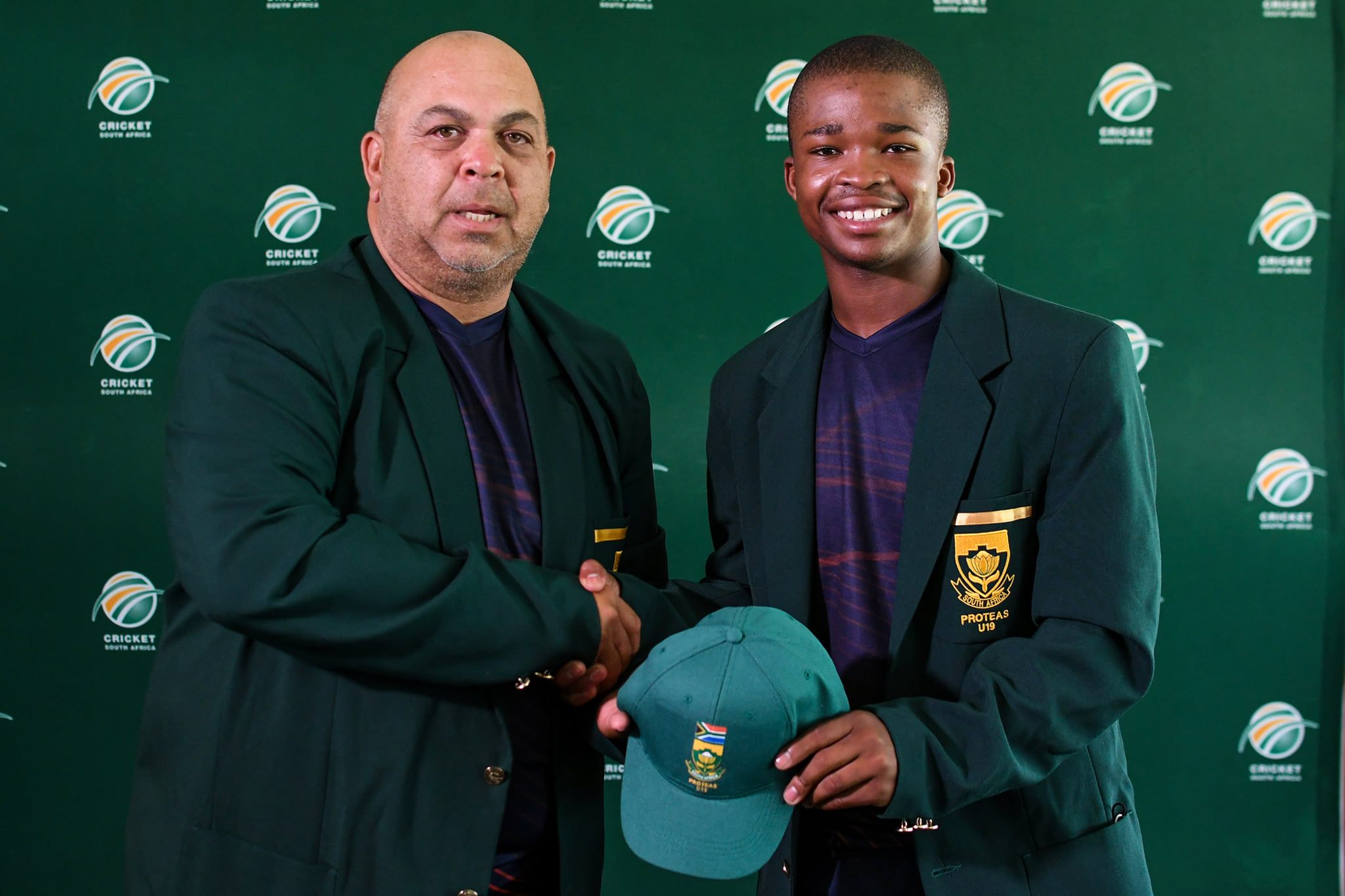
Photo Credit: CSA
Most of the recent Proteas have been products of the U19 system, and Conrad emphasized that the establishment of a strong team culture and producing quality cricketers for the top-flight domestic scene in the country are both key priorities at all times. He got appointed for the role in 2020, and while it’s been a testing path so far, he’s got a clear plan laid out.
The surge of the pandemic robbed South Africa of crucial opportunities to play against other U19 national sides, but there were other factors that helped determine whom all the strongest possible U19 team would comprise.
“First of all, the scouting process started in Cubs Week, in February. We were seriously fortunate during the second wave of COVID to get that event going, where we then selected our SA U19 side. That team went on to play in the senior provincial tournament over in Kimberley. It was always an evolving process. We held a few camps after that, with some practice matches. The Sri Lankan team was going to visit, but that didn’t happen for obvious reasons. We had to change up the program, and the squad evolved as the process went on.”
Furthermore, Conrad made it clear that ample training is required during the camps, since it wouldn’t necessarily make logical sense to hold a handful of nets sessions and practice games. Backing the players from a coach’s point of view and aiming to elicit the best out of each is the approach going forward. Physical, mental, and technical training are all tantamount when it comes to building a respectable team culture. Playing cricket for a profession isn’t something to be taken lightly, and instilling values of a hardworking, upstanding individual is most important for Conrad.
Looking back at the selection pipelines, a lot of the young cricketers in the country have made it through the school system, where they have built a strong reputation with their skillset. There’s no doubt about the fact that reaching such heights while still in school is commendable, but humility is a characteristic that must be enforced.
At the same time, mental toughness can go a long way in professional sport. It’s often said that talent isn’t the be-all and end-all, since building on the potential is what counts to a much greater extent. Everything comes over time, but competition can very often be fierce and unforgiving, and that’s something to be aware of.
“Yeah, so keeping their feet on the ground was why I wanted them to play against the Division 2 sides. The T20 competition gave them a strong understanding about where the team is. We might be big fish in small ponds at school level, but in the real world out there, there’s still a long way to go. And I believe that character is big - we can have guys with ability that’s second to none but if the desire to front up isn’t there, we’d have to settle for the guys with the tougher mentality. As the T20 competition went along, I learned about the characters we have in our side.”
Conrad backs himself as a reliable “people person” and feels it’s best to let the players be themselves and not try to alter their character, since that contributes to developing a more fearless brand of cricket. Ups and downs are part of life - there are times when you enjoy lots of success in a short space of time. Then again, there are times when you might encounter failure, and dealing with the disappointment and bouncing back with more strength and knowledge can be challenging.
“Well, we don’t see anything as a failure, per se. It’s all part of development. To add some context - if it’s a batter, we want to rid ourselves of soft dismissals. If it’s an execution issue, it’s something we can figure out in the nets sessions. It’s great to have people like Neil and Rory on board, and they can discuss their experiences at international level. The boys can then relate to that, and it brings a sense of calmness.”
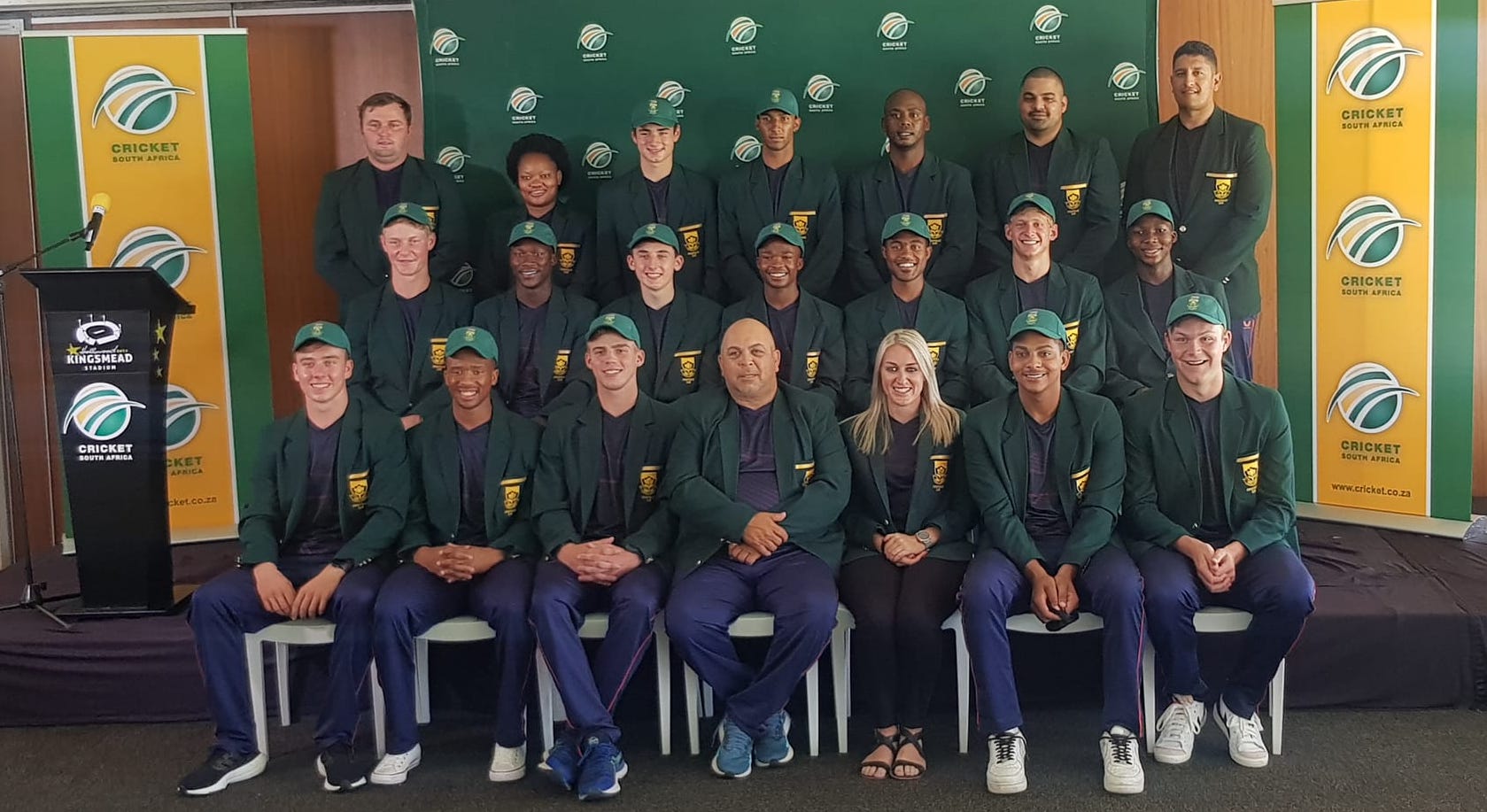
Photo credit: Suleman Modan
When it comes to the game plan, it’s a fairly straightforward line of thinking for Conrad. Focus on your game and what you can do better, but opposition research can be vital, too.
“For example, when our bowlers are up against certain opponent batters, there might be certain trends of dismissals and based on that, we can determine how to stop them from scoring. That will become very important during the World Cup. We can search through YouTube to find footage to see how the opposition stacks up, and we can work out plans accordingly that could give us an advantage. That said, we aren’t overly reliant on that - we want our guys to think on their feet.”
South Africa were one of the first to announce their official squad for the U19WC, and a notable change was the appointment of George van Heerden as the skipper. Previously, Daniel Smith led the U19 Proteas, but due to eligibility complications, he won’t be taking part in this edition. Fortunately, he’s begun his senior career with Western Province this season.
Conrad has talked up van Heerden as a very promising and determined competitor, and there are more reasons than one to back it up.
“George [van Heerden] is one of a few select guys we felt would be able to lead the side. I want leaders, first and foremost. We can develop the captaincy aspect later on. For far too long, we’ve had excellent captains but not necessarily very good leaders. George’s leadership qualities are immense - he’s got a natural affinity for people that want to spend time with him.
"He’s able to flip between taking a strong stance and being just another one of the boys. It’s easier to captain a school team, but when you’re up against the best international or provincial players, you must be a lot smarter. This is something he’s learning pretty quickly, and we’ve got guys around him that he can get help from.”
Another of the standout players in the squad is Dewald Brevis, who has played a handful of games at senior level. He quickly gained stardom, due to his freewheeling demeanor with the bat, just like AB de Villiers. Conrad was full of praise for Brevis, the resident showman in the team.
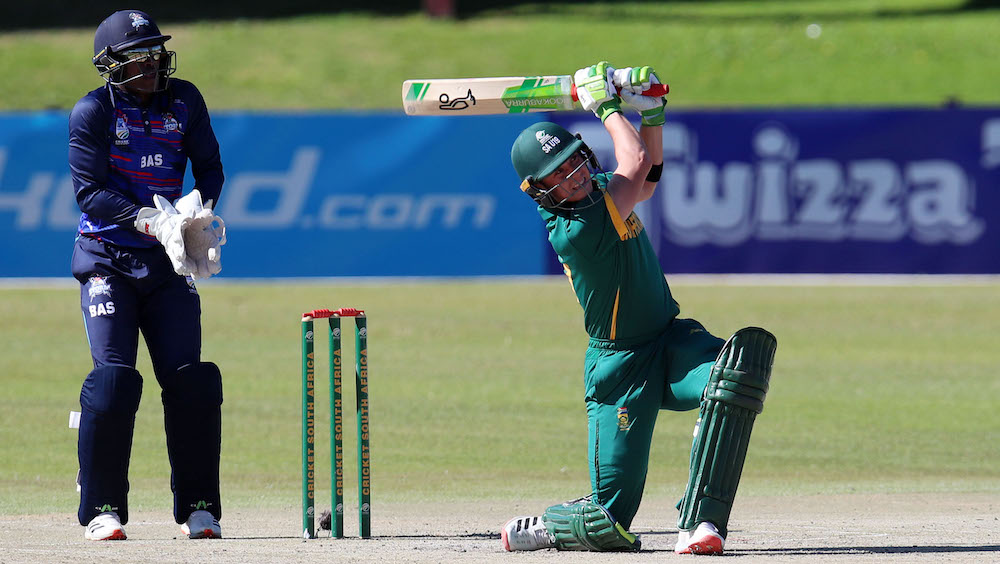
“Dewald’s a kid that loves cricket and he plays like AB, who’s a pretty good hero to have. The big conversation I’ve had with him is that being an entertainer is one thing, and scoring runs is another. Without taking the flair he’s got, I’d love to see him entertain us for longer.
"He showed us in the game against Easterns, where we were in a precarious position. Plus he had a great ally in Andile [Simelane]. This is what I’d like to see from him. Whenever he gets in, he shouldn’t feel the urge to entertain as the overriding factor. He must win games for us. All in all, he’s a great guy to have in the team.”
It’s the constructive criticism from Conrad that could be a priceless motivating factor for the youngsters. When it comes to man management, the minimalist outlook and letting everyone express themselves freely will definitely create a more positive and supportive environment.
It’s been close to eight years since South Africa lifted the silverware in the U19 World Cup. But with Shukri Conrad at the helm, the overall confidence level is bound to rise.
All the bases are covered with a squad full of gifted players, but the challenge lies in the sharp step up from intramural and domestic level to playing against some of the best in the business in the international arena. With a well-defined modus operandi and an astute analyst in a head coach, more progress awaits the South Africans.
SOUTH AFRICA U19 Fixtures
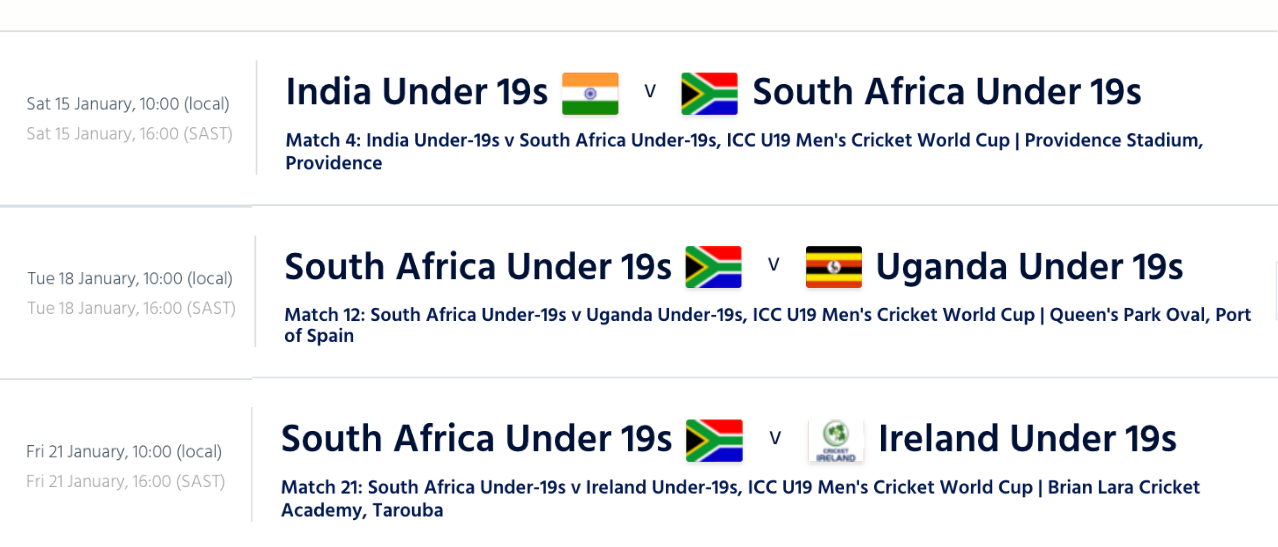
Get More Clients With Cricket Fanatics Magazine
Cricket Fanatics Magazine has the visibility, infrastructure, expertise and toolset to automate your marketing and branding.
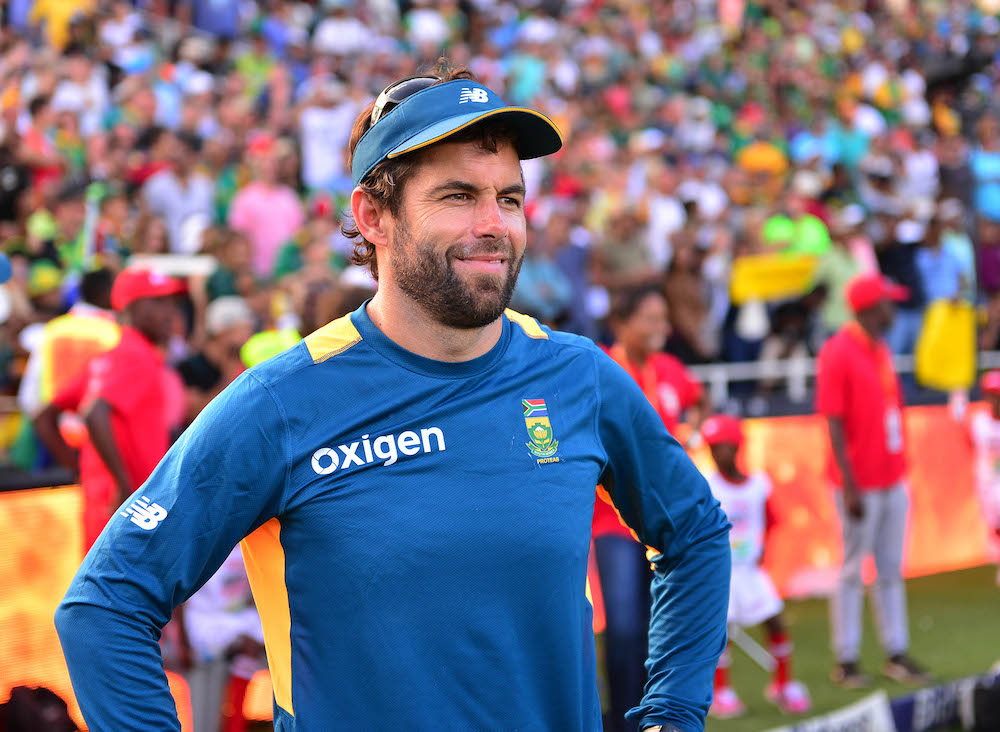
“We try and create an open environment" – Neil McKenzie
Neil McKenzie watches intently. He is happy with what he sees. One of the batters has just played a well-executed sweep shot, and it’s not against one of the regular spinners. It’s against a spinner brought from outside the Under-19 side.
The ball threads through the cones that are in place demarcating scoring areas, this is where we look to score against the offspinner these are options.
A few months ago that shot would have been played out of desperation, but now it has been played because it is the right shot against the delivery. But now the technique is more solid and there is confidence in the shot. This is the result of time, work and effort.
Shukri Conrad, the Under-19 batting coach, and the other people involved in selection targeted a certain group, and they've stuck with them for almost a year now. That is what has made development easier. Everyone involved, Neil McKenzie, the CSA High-Performance batting lead, and the consultants who have been working with the side have had the luxury of time with the batters.
“There's been a lot of opportunities for these guys to learn,” says McKenzie. “There's been quite a few camps. There's been an Inland and a Coastal camp. We have played against a few of the provincial sides. These guys have sacrificed a lot of time to be in the squad.”
Some players have written exams while they have been in camp. And while some have already matriculated, some are still in school, and to help them with their studies, CSA employed a tutor, Brandon, who helps the players with studies and revision. Luckily for the players, Brandon is also quite handy with the dog stick.
“It just so happens, Brendan isn’t just a fantastic tutor, but he also throws the dog stick at about 150 kilometres an hour,” McKenzie reveals. “I'm not sure which of the two the guys were more afraid, you know, having an extra lesson in maths or getting a throwdown at 150k/h.”
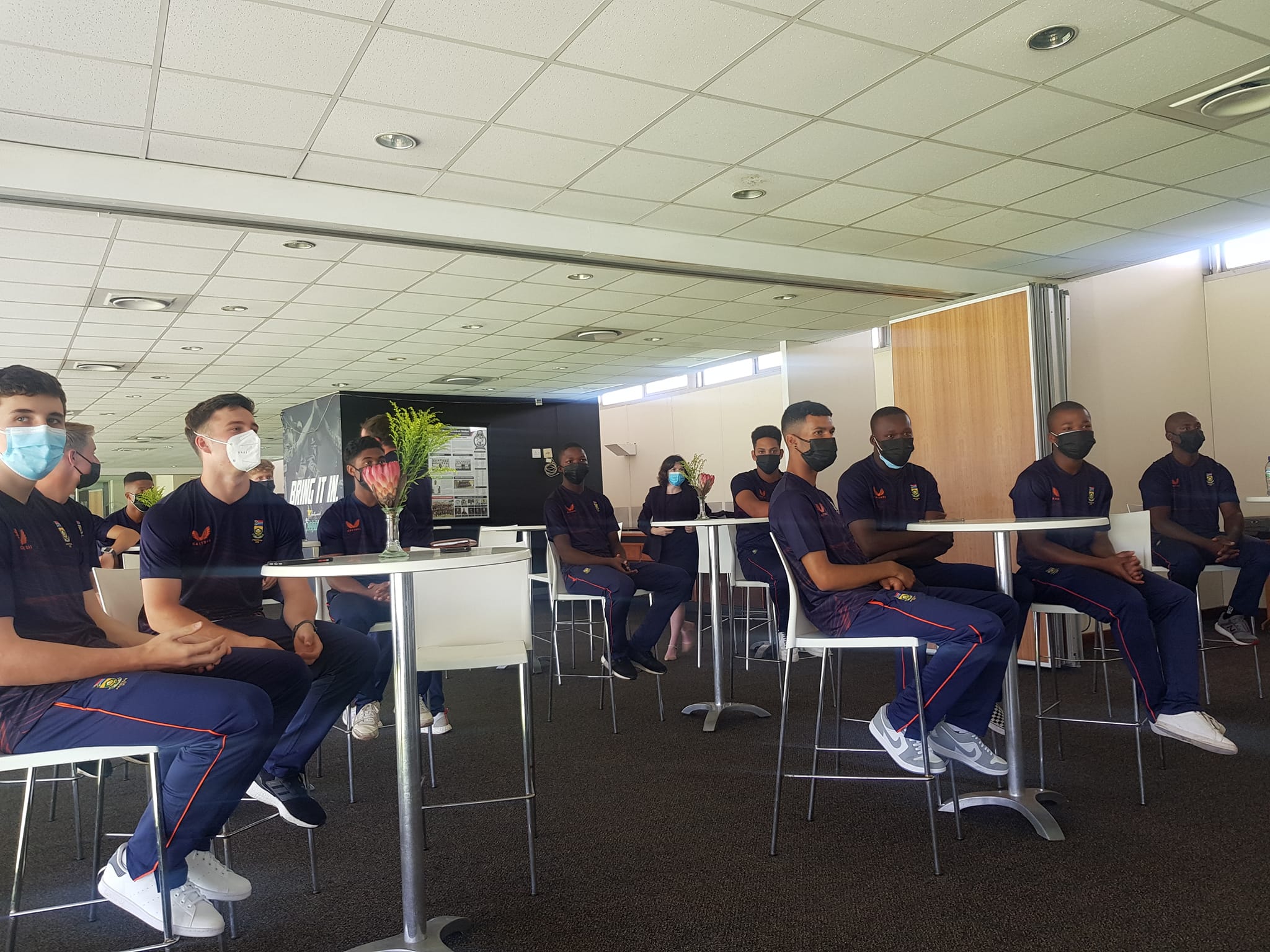
Photo credit: Suleman Modan
Over the past year or two, we have seen how bubble life has been taking a toll on professional athletes, many have had to pull out of tours and series due to bubble fatigue and related mental issues.
This has been at the forefront of the minds of the team working with the Under-19 side, especially given the time these youngsters are spending in camp.
“We try and create an open environment, we keep it quite light,” says McKenzie. “There are structures in place that guys can come have a chat if there's something that's bothering them. It's quite open, it's not a closed shut sort of environment.”
It is all paying off now, thankfully.
For the Under-19s, spin has been one of the main areas of concern.
“In the West Indies, it could get drier and drier as the tournament goes,” McKenzie explains. “So spin will come into effect there. You're playing against subcontinent sides that carry and have traditions of having world-class spinners.”
McKenzie is set on avoiding a situation where the guys walk out to bat against a subcontinent side like Pakistan or India that has quality spinners and the batters do not know how to handle the situation.
“We got to prepare these guys,” he says. “We don't want them walking in against India, or Pakistan or someone like that, and all of a sudden, they've got reverse swing bowling and they've never seen it before, or they face an unbelievable leg spinner and not know how to play him.
So we've got a job to equip these guys to give them information, and then their responsibility is to go away work on their game, and obviously get better at the skill that we want them to get better at.”
McKenzie is not really worried about pace. Local conditions are very more conducive for seam bowling, and South Africa produces some of the best pace bowlers even at the age-group level.
So, for most guys, their technique against pace is very solid and they have good match awareness of how to deal with it.
Of course, that doesn’t mean that they don’t get tested against pace, they do. There is a strong competitive rivalry between the batting and bowling camps. They often match the new ball batters and the new-ball bowlers in training sessions.
“There's a lot of competition within the squad, but like fun competition, but we try and really practice really, really hard,” says McKenzie.
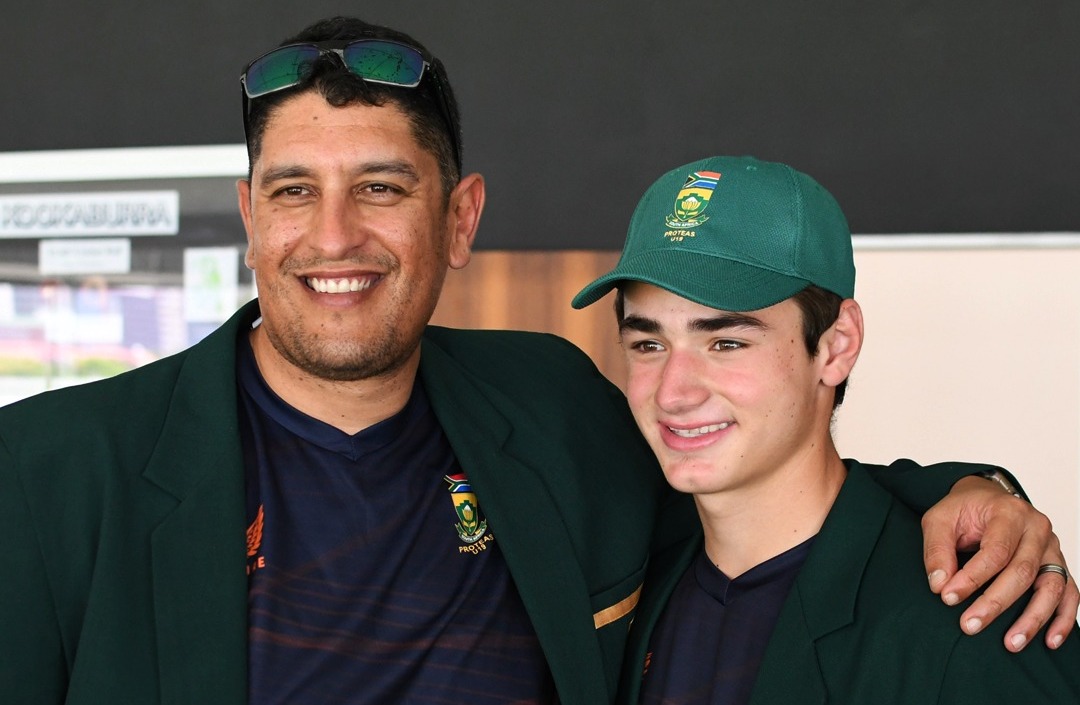
Photo Credit: CSA
Rory Kleinveldt, the bowling coach, places a lot of emphasis on hitting the right areas while McKenzie and Shukri Conrad focus on scoring areas.
“I think in the South African conditions you don't really get tested against spin. We get away with poor techniques, we get away with poor options because of our wickets.”
So, early on when they put the team together, the primary focus was on getting the technique right, nothing else.
“In the early stages we had to show them, ‘Okay, to hit the off spinner, you've got to be looking there. To hit the left-arm spinner, you got to be looking to there, and there as your options,’” says McKenzie.
“We told them, ‘This is what you're looking to do, this is what he's trying to do. You've got to sort of open up your shoulders.’”
As McKenzie explains, ‘it’s no use having a bad technique, and you can't knock a one where you should be knocking a one and then you put yourself under pressure. And then that's like a snowball effect.’ It is for this reason why Shukri and McKenzie really focused and had to really get deep into the technical side of things.
The next process is sort of the mental side of things, the game awareness, the game plans. Having a good technique doesn’t go a long way if a player lacks the awareness to pick the right shot to deploy against a spinner.
“One of the things that we're doing is helping them to think as best as they can, how to assess the situation,” says McKenzie, “to think critically and then execute.”
McKenzie spends a lot of time with batters teaching them how to think about the game in line with Shukri Conrad’s plans.
“There's certain standards or parameters that we've got in terms of how we want to play the game,” McKenzie says. “Shukri is all about being really, really positive. Play the conditions that are in front of you. And so it's my task to portray that message across as one of the batting guys.”
And while positive cricket is about dominating the bowlers, there is also a lot of talk on the rotation of strike.
McKenzie stresses that while they try to teach the guys how to think about the game, they do it in the context of the individual player. They don’t want everyone batting in an identical fashion or batting like a specific batter.
There is talk about game plans and technique, but they still want the batters to express themselves because they play their best cricket when they are themselves.
At one time, McKenzie was also an 18-year-old batter and he knows the feeling of invincibility that comes with youth. He doesn’t want to take away that confidence from these guys. He just wants them to know that they can be invincible if they make smart choices, play the conditions well and dominate.
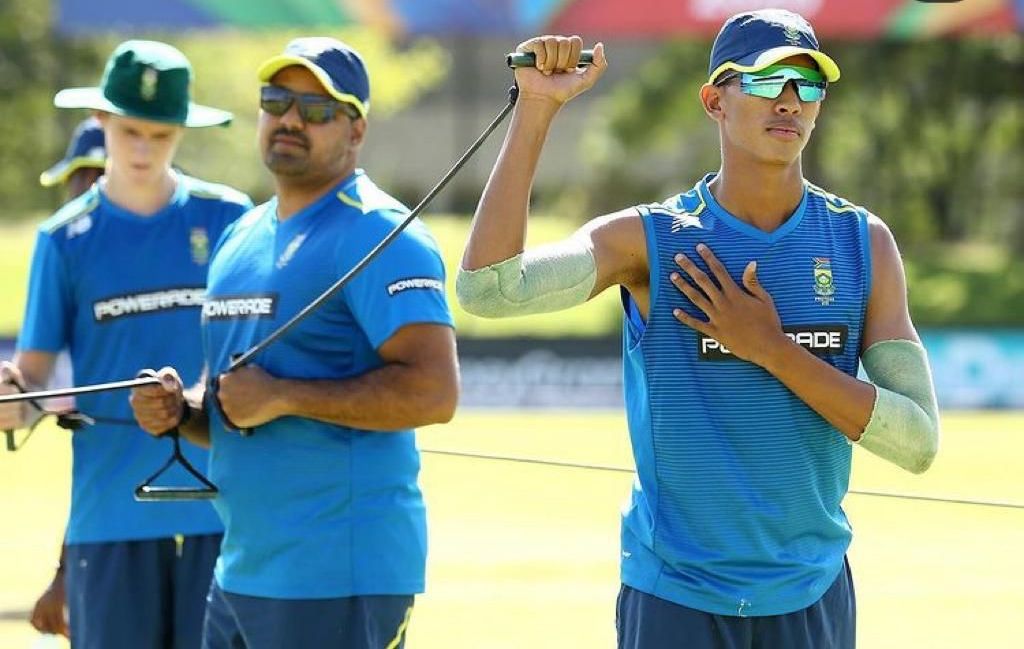
By Aditya Mehta
In 2002, when a laptop was brought to the dressing room of the Indian cricket team for the first time, Sachin Tendulkar was confused because he could not comprehend how technology could help the team elevate their standard of performance.
In present times, it can be argued that technology and the experts that administer it are central to the growth of the game.
The brand of cricket that teams have started playing in all three forms of the game can, in large part, be attributed to the comprehensive analysis delivered by analysts across teams in world cricket.
Kyle Southgate, currently serving as a Cricket Performance Analyst in South Africa’s under-19 team, strives to discover patterns in the game, as well as the strengths and weakness of the South African team and opposition teams. Southgate tries to “create a blueprint on how to go about the game against a certain opposition.”
At the under-19 level, there is a lesser volume of video footage because new players come into the system every two years, and a significant number of games are not televised, but the emphasis is to “keep it simple, to the point.”
Southgate pointed out that the nature of team meetings, where a collective team strategy was crafted to dismantle an opposition, has changed. Now, players formulate their plans on a one-on-one basis. While some players need no more than twenty minutes, there are others who spend hours on analysis.
Similarly, various coaches in the team management have their individual approaches to using data. For instance, a batting coach would want to analyze an opposition batter’s backlift, head position, and release shots after facing multiple dot balls.
It is evident that Southgate, in addition to being a successful Cricket Performance Analyst, also has to understand player psychology.
“So normally, a player is really good in one area, they can also be weak in that area. If someone is good on the hook, you can also be out to the hook, you can be a compulsive puller. Those are the kinds of things you are looking for.” These patterns, Southgate explained, can change over multiple series.
If Southgate is analyzing oppositions, opposition teams are also looking into the strengths and weaknesses of South African players. He watches opposition strategies keenly, but tries to avoid cluttering the minds of his players. “Don’t overthink the situation. See ball, hit ball, make a decision and stick with it,” advises Southgate.
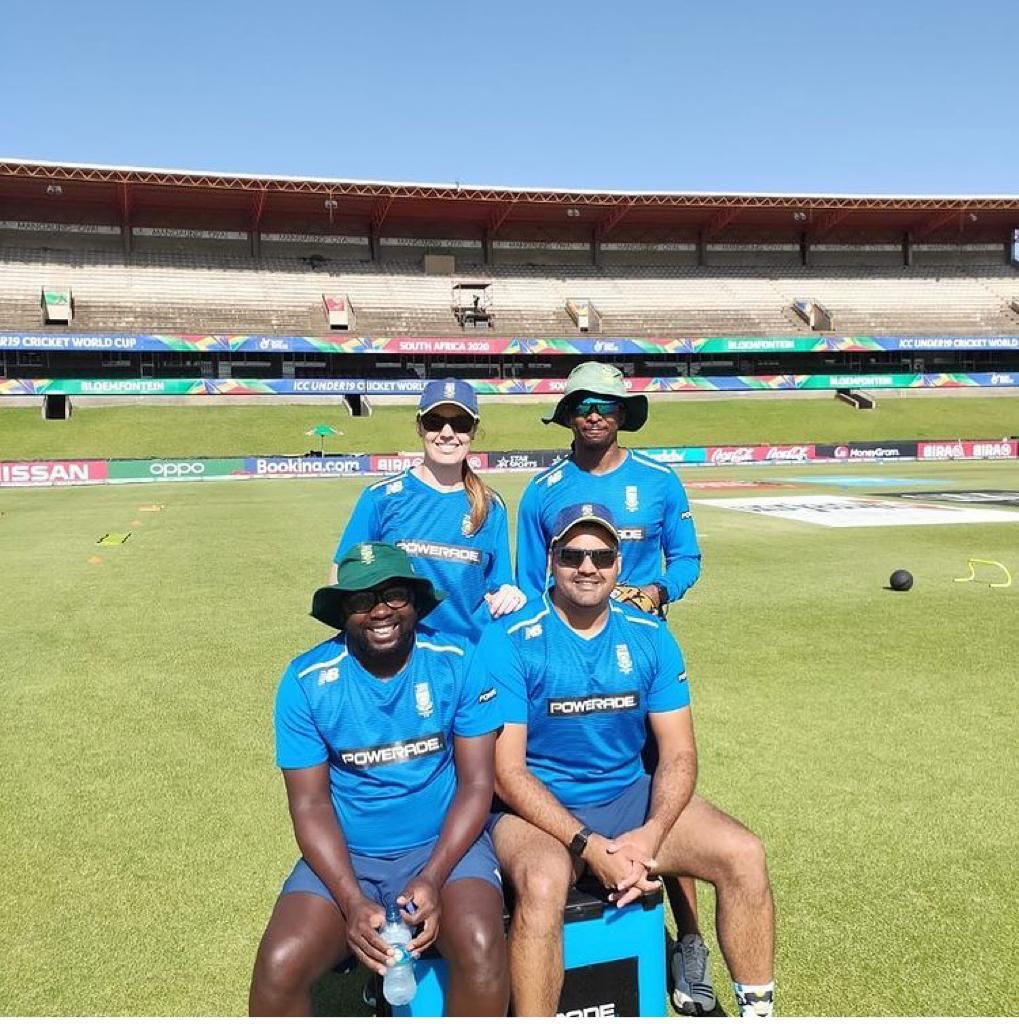
The nature of video analysis tends to differ across the three formats, with the white-ball forms requiring more specific analysis.
With respect to batters, Southgate tries to get a sense of how they approach their first 20 balls, the manner in which they cope with pressure, and the shots they employ to release pressure.
For bowlers, Southgate analyzes the lines and lengths they rely on, the variations they possess, and the tactics they rely on under pressure. “Basically, it comes down to who panics last wins the game.”
Over the last decade, fielding standards across the world have improved dramatically. Southgate, in conjunction with the fielding coach, makes notes on specific facets of fielding such as the quality of the pickup and accuracy of a throw. If the team’s fielding performance has dipped, Southgate is confident that any technical flaws will get resolved quickly.
“Generally, I feel the coaches are quite on top of those things and it gets ironed out very quickly. Fielding is quite easy to analyze and break down.” said Southgate.
Southgate also produces detailed analyses of grounds that the team plays on. Although he provides a basic structure of how the team should approach the game, he advises players to “play the game in phases” because conditions change through the course of a game, and the team must be equipped to dominate a situation.
The narrative in the cricket community typically revolves around the skills and temperament of players. The evolution of the game over the last decade has witnessed batters, bowlers, and fielders showcase skills that we never knew were in existence, and they, quite rightly, get the accolades.
In doing so, we must also recognize the contribution of performance analysts such as Kyle Southgate, who arm players with the knowledge to outsmart opposition teams game after game.
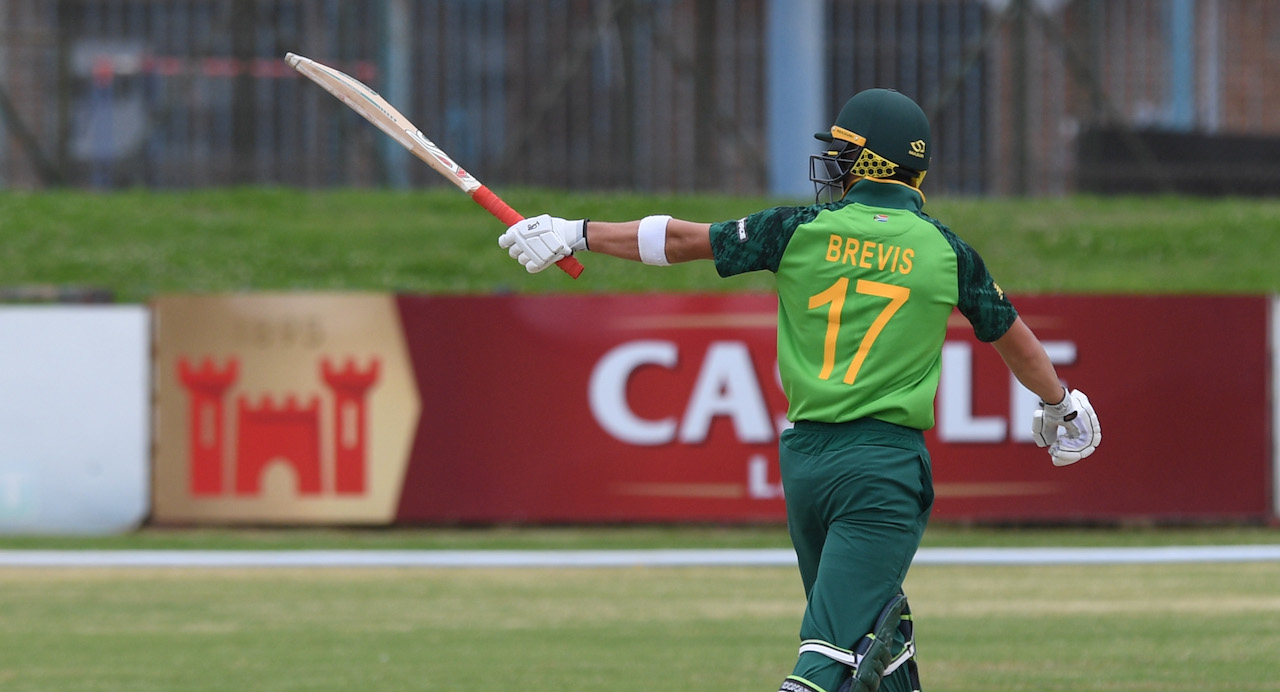
Dewald Brevis aspires to play at least '10 per cent' like idol AB de Villiers
By Marc Jacobson
South African U19’s Dewald Brevis possesses, in various shapes and forms, the attributes of world cricket superstar AB de Villiers, who is the teen’s foremost idol in terms of his style-of-play.
Brevis was schooled at Affies (Afrikaanse Hoër Seunskool), the alma mater of De Villiers, and this symbolic standpoint has aided the 18-year-old in discovering his own alternative identity as a cricketer.
“AB de Villiers has always been one of my role-models; from a young age, growing up, I [used to] watch him play,” Brevis told Cricket Fanatics Magazine.
“I always wore my AB de Villiers shirt that my mother made for me. [I just love] the way he plays. He has a great mindset and he likes to entertain people.
“From a young age I was the same – I also wanted to entertain and put up a big show whenever I batted.
“AB is someone I look up to and if I can play only 10 per cent like him I’ll be happy. I’d love that.”
Brevis’s SA U19 shirt also displayed the number ‘17’ on his back, which was the same number De Villiers wore since making his ODI debut for the Proteas back in 2005.
“I met AB for the first time at Affies and we sort of had a relationship since then. I asked him then if I could play with the No 17 [shirt] and he said ‘sure, play with it. That’s perfect’.
“Growing up and having him as my role-model and being someone I really looked up to in the cricket world, the number 17 has always stood out to me,” he said, adding that he was speechless and “stunned” when he first met De Villiers at the time.
“It was an amazing experience – I was just stunned. I was just listening to all the stories he told and I was amazed.
“I was like a small child – I just couldn’t get a word out,” Brevis quipped.
With the likes of De Villiers and Faf du Plessis having went to Affies, Brevis used their narratives as a means of heeding to his own calling in the future to come.
“The first time I went to Affies we had a tour through the school and in the cricket clubhouse there were the shirts of all the Proteas players, as well as all the players who’d played overseas,” he recalled.
“The shirt that stuck out was the one with the number 17 and ‘De Villiers’ on the back. That [resembles] me as a player and it’s a big dream for me to represent my country, while playing all over the world.”
Brevis showed some exemplary form at the CSA Cubs Week that took place in February 2021, which casts an eye on the budding player he is developing into.
Having represented the Titans Cubs, who came second overall behind the Cobras Cubs, Brevis racked up scores of 0, 25, 41*, 58 and 62 – scoring a combined average of 46.50.
He scored a total strike-rate of 96.88 – one of the highest in the week – that included 21 fours and six 6s.
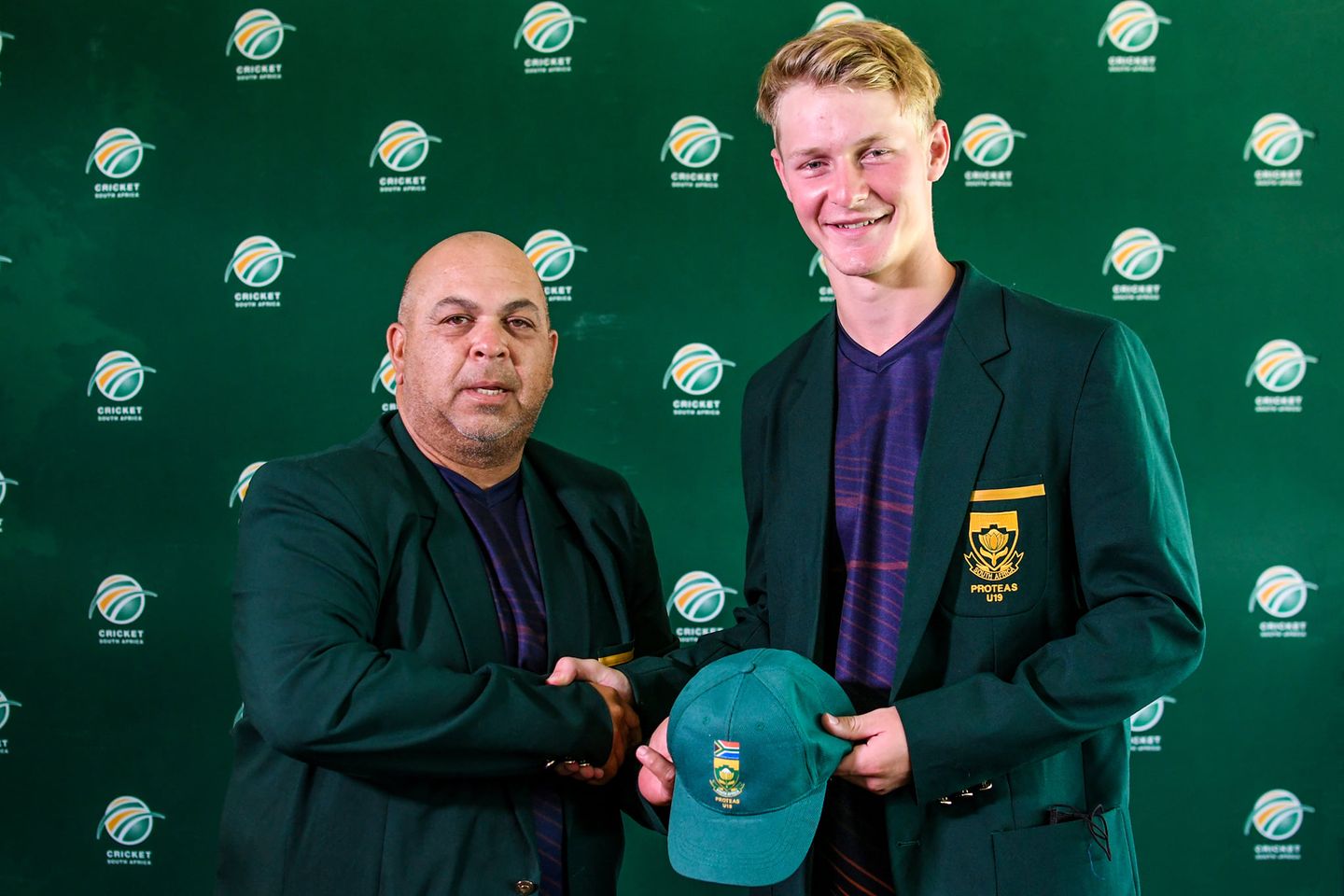
SA U19 PLayers to Watch
By Lubabalo Skhosana
The South Africa Under-19 side has been hard at work since the first day the squad was announced post Cubs week. There have been changes here and there for different reasons but the squad has mostly remained the same. Even for the tour to the West Indies and the World Cup, the squad is mostly the same.
Many can agree that this current group is arguably one of the most exciting groups that we have had in terms of flair and skill. This is a side that has fared very well against some of the professional sides in the country and has gone on to defeat a few of them. The big question now is, how will they fare against boys their age? We will see that in the West Indies and at the U19 World Cup.
The SA U19 side much like any other side boasts a number of individuals who all offer something different, but in any team, there are a few individuals that stand out. These are the individuals that I see as key to the team’s success.
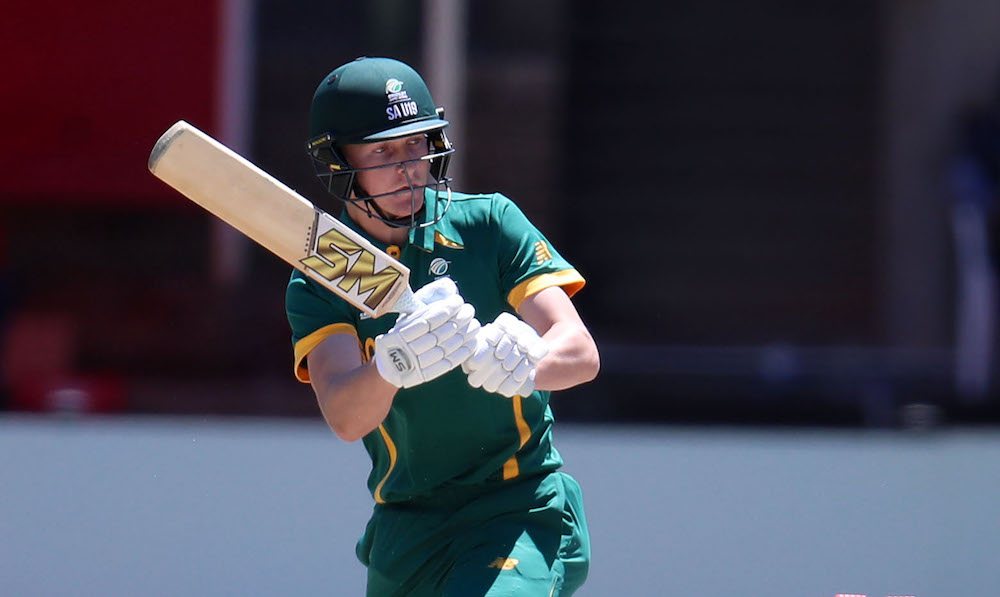
Opener
This one is easily the hardest to pick because both openers on their day could take the game away from you. Anyone who has watched this side and has seen Jade Smith can agree that his flair at the top of the innings is always something to watch but I have gone for hard-hitting batsman, Ethan Cunningham. While Jade has flair and is also a dangerous batsman, Ethan has proven to be dangerous and is also a bit more consistent in terms of run-scoring. Ethan also comes in as a seam-bowling all-rounder which brings something different to the team at large. His knock of 115 off 91 balls against Six Gun Grill SWD was evidence of what the young man brings to the table.

Middle Order Batsman
This is someone who has somehow managed to forge a reputation for himself already. Someone who, many will be watching closely because of the talent and skill that he possesses. Everyone will be looking very closely to see how he does in a World Cup – young Dewald Brevis. He is one of the boys that have already landed themselves a senior contract. He is a naturally attacking and entertaining batsman. Brevis will be very key for the U19 side either coming in at 4 or 5. He is that one guy the team will look to as far as game-changing innings are concerned. Tipped as the next AB, Dewald has shown what he can do with the bat. His most recent innings is a 140* off 119 balls that came in a successful run chase against Eastern Storm. This entertaining big knock came when the side had its back against the wall.
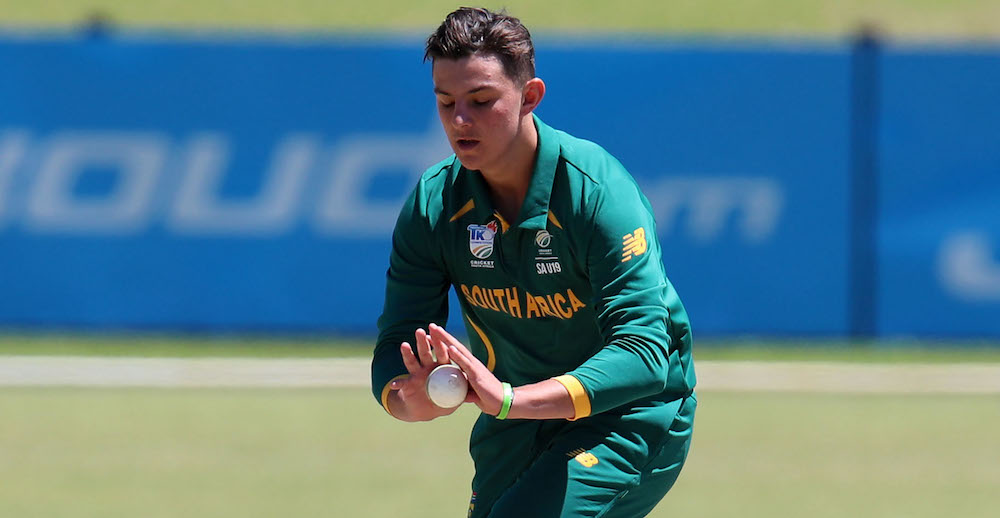
All-rounders
The side has several all-rounders who could change the game on their day. We have gone for two all-rounders, a spin-bowling all-rounder and a seam-bowling all-rounder.
Spin-bowling all-rounder and very handy finisher, Liam Alder is someone who can bowl anywhere in the innings and come in the lower middle order and produce some fireworks. His innings of 66 off 41 that almost gave the SA U19 boys a chance against Six Gun Grill SWD in a chase, is a recent innings where he showed what he can do. He also picked up 2 wickets in the same match.
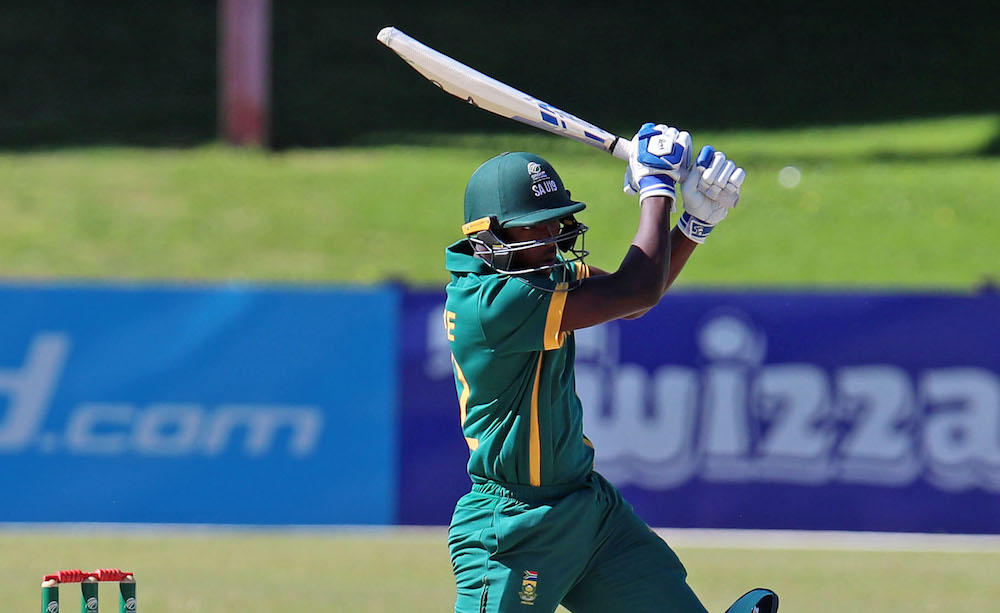
Seam-bowling all-rounder, Andile Simelane is someone who can also turn on the heat with the bat when needed. Andile Simelane’s ability with the ball and bat allows team selection to be more flexible in that the selectors can pick two seamers. The bonus point here is that Andile bats in the top 6 as well. He has good pace with the ball and can bat with maturity. He partnered with Brevis in that chase against Eastern Storm, scoring 95* off 74.

Spinner
Asakhe Tsake has been the team’s first-choice spinner since selection and he has done well with the ball. He is a wicket-taking option as we saw at Cubs week but he can also keep things tight. He is someone who can help build pressure from the other end and is a very good fielder off his own bowling. He will be very crucial to the success of the team at the World Cup.
Seamer
Another difficult one to choose. Could it be Joshua Stephenson who is the quickest in the side? Maybe Aphiwe Mnyanda with his left-arm seam variation or the new boy on the block, Kwena Maphaka with sheer pace and toe crushers?
We have gone with Kwena. Despite his age, he bowls with serious pace and skill. Kwena has a really good Yorker and a short ball that he is never shy to use. He may be new in the setup right now but he has not wasted any time getting into things. Kwena picked up 4 wickets in one of the games played against SWD. He bowled with serious pace, skill and accuracy which is what you need from a seamer. His ability to bowl at the death will be very important.
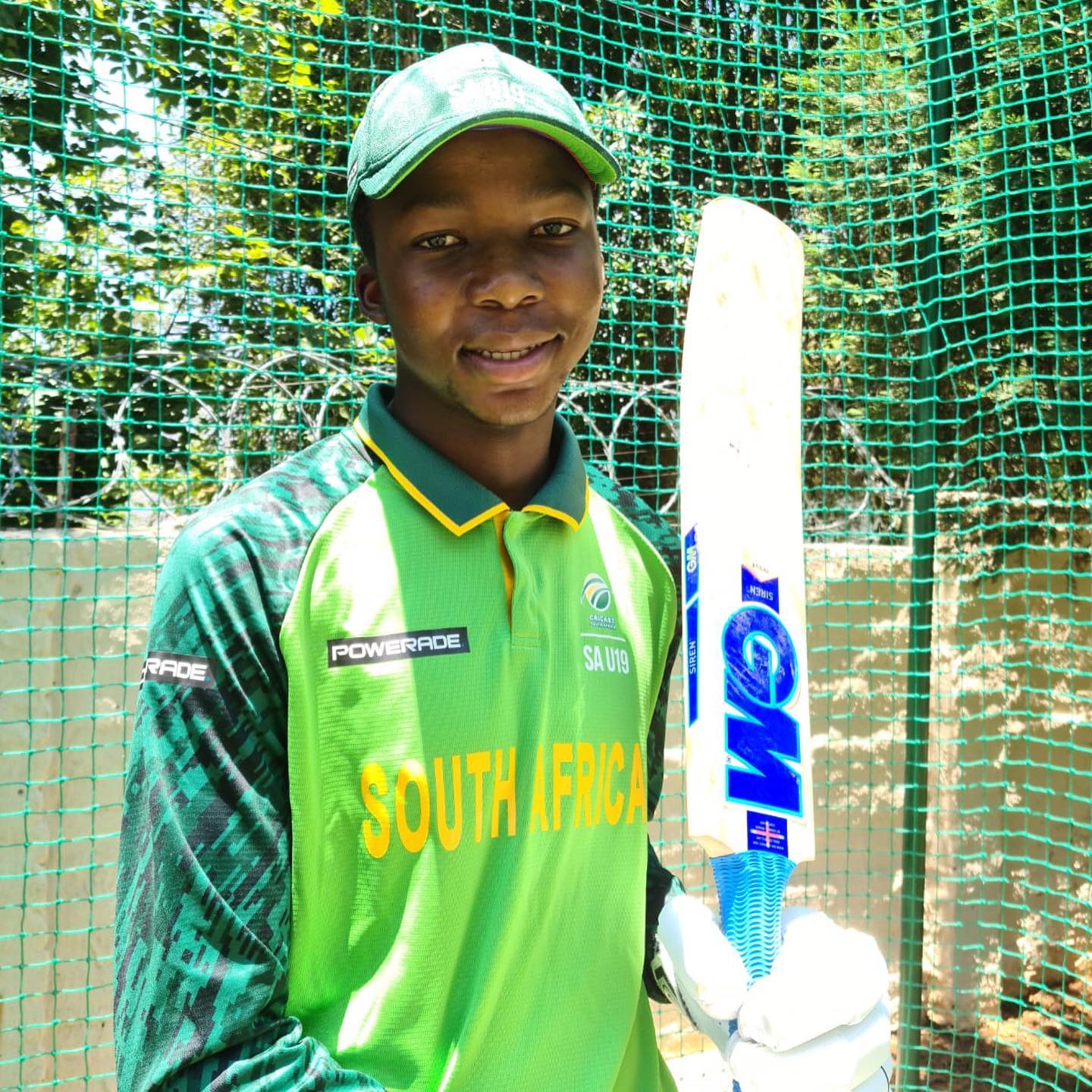
These are the individuals I have picked as key to the success of the SA U19 at the World Cup but that does not in any way take away from the fact that tournaments are won by those that play as a team. The team will still need every single one of the boys to chip in.
One can take inspiration from Aiden Markram’s World Cup winnings side. There was a different Man of the Match almost every match because, in each match, everyone chipped.
2022 ICC U19 Cricket World Cup Squad:
George van Heerden (Captain) (Warriors), Liam Alder (Lions), Matthew Boast (KZN Inland), Dewald Brevis (Titans), Michael Copeland (Boland), Ethan Cunningham (Western Province), Valentine Kitime (Titans), Kwena Maphaka (Lions), Gerhard Maree (Free State), Aphiwe Mnyanda (Warriors), Andile Simelane (KwaZulu-Natal Inland), Jade Smith (Warriors), Kaden Solomons (Western Province), Joshua Stephenson (Warriors), Asakhe Tshaka (Western Province)
Travelling Reserves
Hardus Coetzer (Titans), Ronan Hermann (Titans), Caleb Seleka (North West)
Management:
Shukri Conrad – Head coach
Thabang Khumalo – Assistant coach
Blanche Conradie – Manager
Phumzile Ngobese – Physiotherapist
Curtley Diesel – Fitness Trainer
Kyle Southgate – Video Analyst
Rory Kleinveldt – Bowling consultant
Neil McKenzie – Batting consultant
Salih Solomons – Doctor
Advertisement
Ezra Poole's Online Wicketkeeping Academy
Learn how to Master The Craft of Wicketkeeping Without Having to Hire a Full-Time Personal Coach.
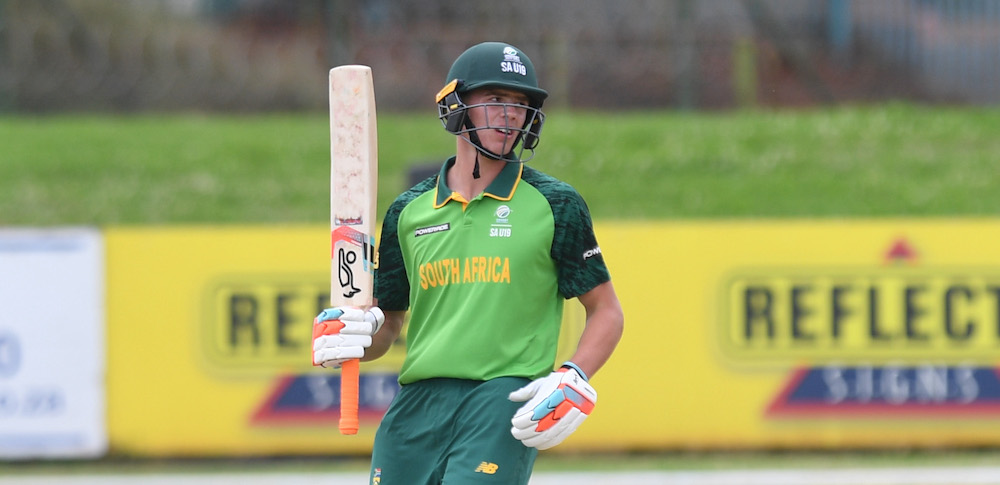
Get To Know George van Heerden
By Khalid Mohidin
Introduced to cricket at an early age, South Africa U19 captain George van Heerden shared his story on the Daily Show.
Introduced to cricket at an early age, George explained that everyone in his family, including his grandfather and father, played cricket.
George grew up idolizing Proteas legends such as Jacques Kallis, Mark Boucher, and AB de Villiers, as well as Wayne Parnell from the Warriors.
As captain of the U 19 team, George, along with the coach, Shukri Conrad, is trying to instil a balance between an attacking and frantic brand of cricket. Being an all-rounder, George is inspired by cricketers such as Ben Stokes and Mitchell Marsh.
Khalid Mohidin and Aditya Mehta interviewed South Africa’s U-19 captain, George van Heerden.
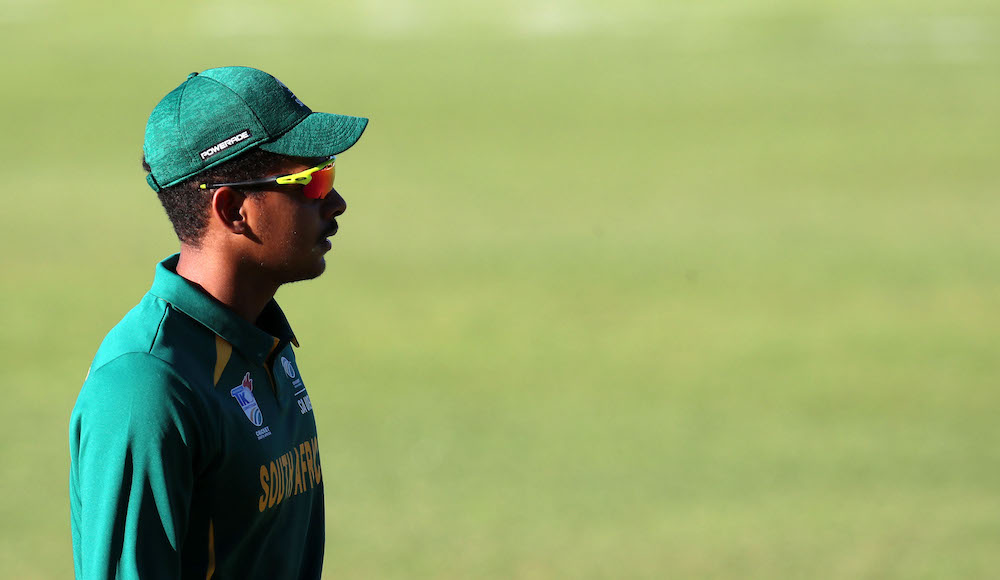
Q&A: Michael Copeland
By The Twins
Tell us how you were introduced to cricket?
My dad watched quite a lot of cricket, so I grew up watching some greats such as Michael Hussey, JP Duminy and all-time favourite Brendon McCullum
Who is your favourite cricketer? Male and/or female
Male – Wayne Parnell/Hardik Pandya.
Female – Heather Knight
Who is your role model?
Glenn Maxwell
Who is your fantasy opening batting pair? Why? Quinton de Kock and Rohit Sharma.
They are both opening batsmen that take the game forward, with an aggressive nature
As former captain of the Lions Cubs, what makes an exemplary captain?
I feel what makes an exemplary captain is the ability to perform in your skill whilst captaining, composure in pressure situations and the ability to portrait that to the rest of your teammates
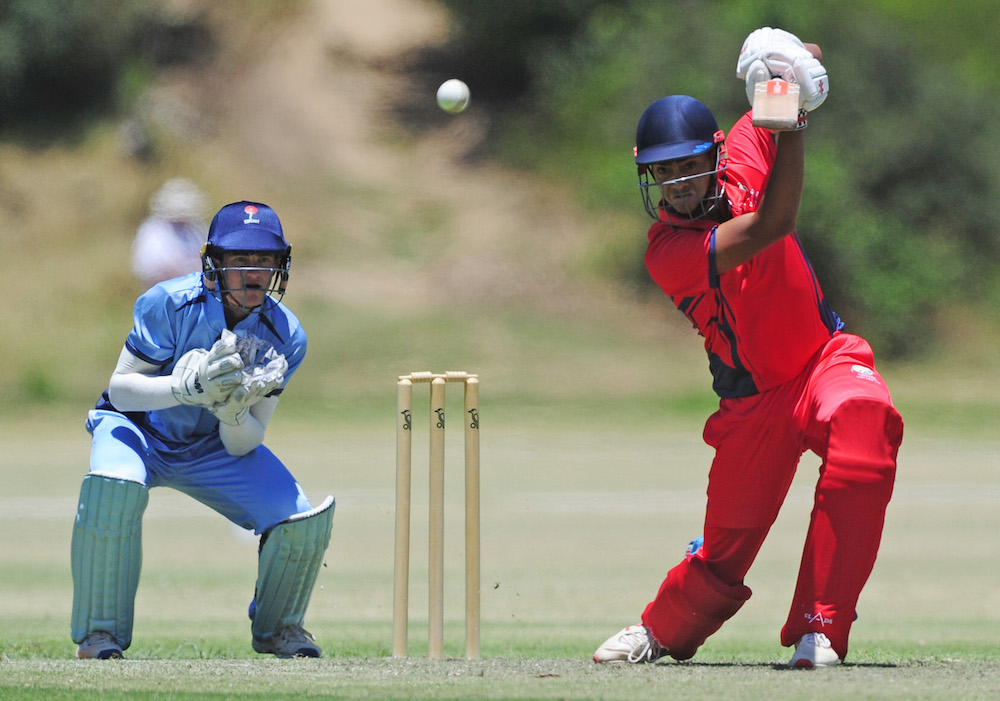
How did you feel making the SA U19 World Cup squad?
It was such a proud moment for my family and I as a 16-year-old getting my first cap against Pakistan in 2019, but to represent my country at a World Cup in 2 months has always a dream of mine that I’ve been working towards since I was 16. Now to achieve that really does have me believing in dreams.
What are your thoughts ahead of the U19 cricket World Cup in the West Indies in 2022? What do the preparations entail? What are you most excited to see touring the West Indies?
I’m making sure I’m in my best mental & fitness state prior to the west indies tour. Skills practices and top ups have been included in between conditioning sessions. I’m really excited to experience their cuisine and get to know their culture quite a bit.
How do you stay focussed or cope with pressure during a match?
It all comes down to your preparation prior to the game as that will be the way you react to pressure and shows the lengths of your focus time.
As a bowler, how important is variation?
I feel it is important so a batsman doesn’t get comfortable and you keep him guessing. But I’m more of ‘if it works, don’t change guy’.
What are your cricketing goals/aspirations?
My first goal is to do well in the world cup and if all goes well we bring the trophy home. I want to be a representative for my country at men’s level. Then also achieve a degree whilst exploring my cricket career.
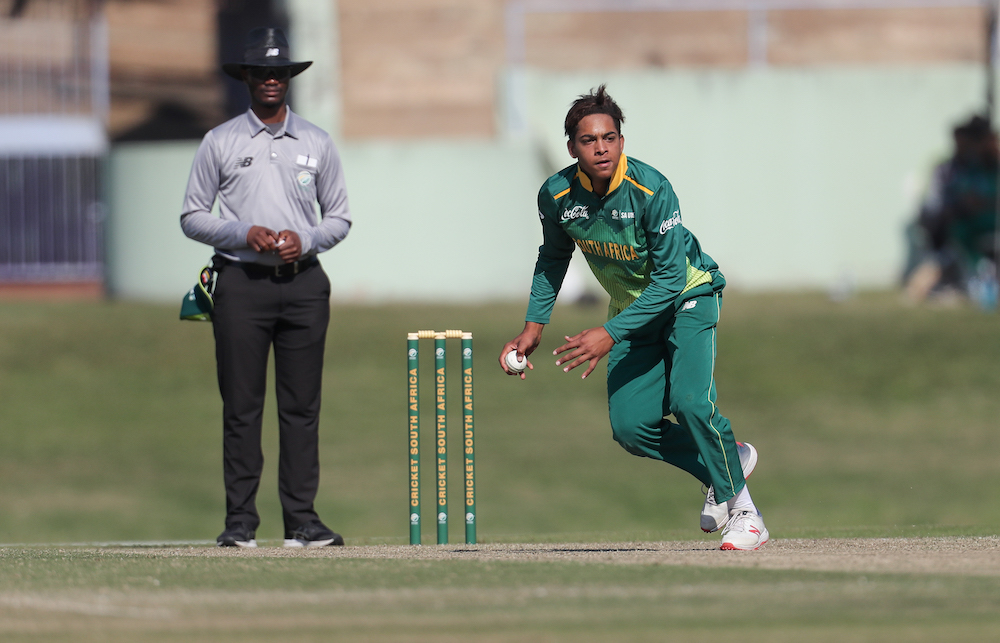
What do you do to hype yourself up before a game?
I listen to music
Most played song on your playlist right now?
6pm in New York
Which series are you currently following?
Money Heist
You
FIFA or Call of Duty?
Call of duty
Favourite/least favourite food Favourite?
Chicken and mushroom pasta.
If not cricket, which career would you pursue?
DJing or I’d pursue a career in sports psychology.
Burning question: Manchester United or Liverpool?
Liverpool
On tour, who is the entertainer in the team?
Jade smith
What is your most memorable cricket moment?
Contributed a 98 of 60 odd balls to help my team across the line in a Cubs Week final.

Dan Weston: Taking a closer look at the numbers
Dan Weston didn't have much talent in cricket, but has always been numbers inclined.
So after years of working as an accountant, he became a professional gambler, before he decided to have a look at cricket using numbers.
Now he is a recruitment specialist and helps teams with strategy.
Dan currently works with Birmingham Phoenix and Leicestershire CCC.
Offside Maidens
Daily Show | Let's talk about it
Video Playlist
The Podcast Live Show:
Exclusive Interviews
Crossword Puzzle
Current/Former SA U19 Captains
ISSUE 17: Crossword Answers
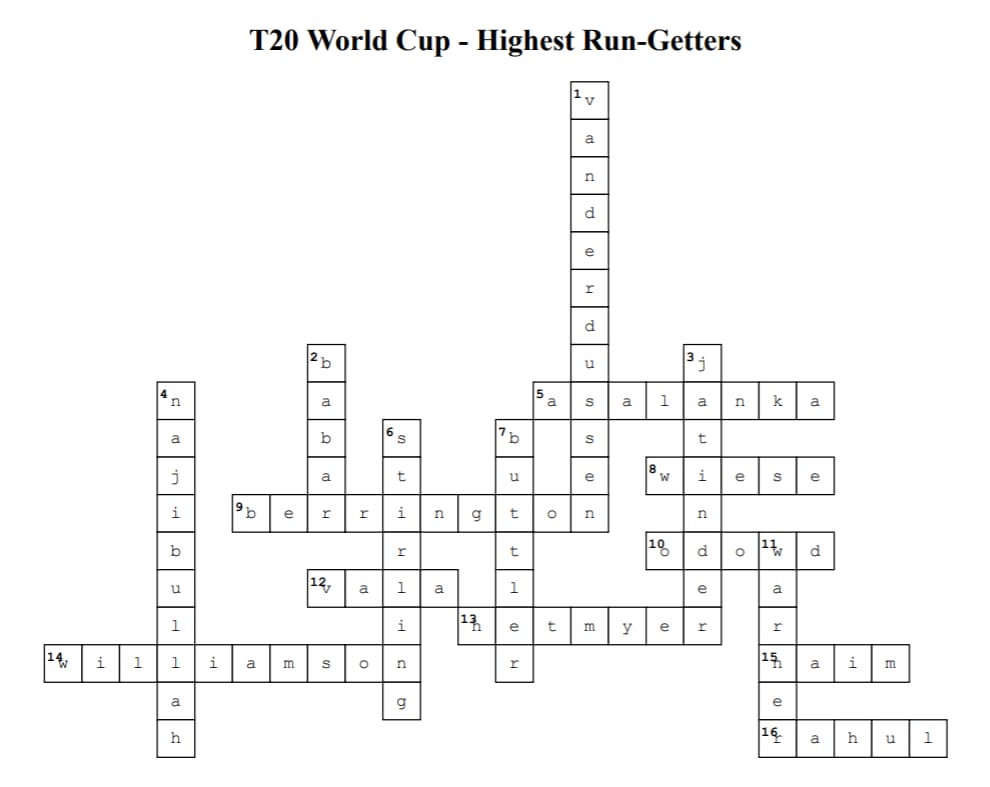

Magazine info
Editorial Director
Khalid Mohidin
IT and Technical Director
Faizel Mohidin
Contributors
Abhai Sawkar
Aditya Mehta
Chris Chiwanza
Emily Norris
Janine October
Jessica October
Keanan Hemmonsbey
Khalid Mohidin
Licia Woods
Lubabalo Gift Skhosana
Marc Jacobson
Tara-Lee Essack
Graphics
Khalid Mohidin (Cover and Graphics)
Mohammed Hoosain (CFM logo)
Images
BackpagePix
CSA (Capping picture)
Supplied
Twitter
Facebook
Video Binge List:
On Lockdown Series
The Podcast Show
Legends with Ravi
Daily Show